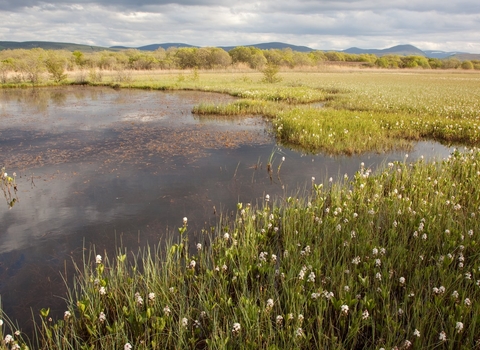This year, as the UK hosts the global climate conference, COP26, all eyes will be on the UK’s own action to tackle climate change. The Wildlife Trusts believe that the Government’s failure to address a key issue – how to end the damage to carbon-storing peatlands and restore a significant proportion of those that are already harmed – will be a major embarrassment.
Peatlands are the UK's largest on-land store of carbon, holding three times as much as woodlands.
They store around 3.2 billion tonnes of carbon, but in their current degraded condition they release the equivalent of 23 million tonnes of CO2 every year. That's 5% of the UK’s annual greenhouse gas emissions. They are a precious wildlife habitat and vital for holding back and filtering water. Their benefits to society are immense. But a high proportion of UK peatlands have been damaged, drained, extracted and burnt over decades of misuse.
Indications that the Government will fail on this issue are:
- There is still no sign of the long-promised England peat strategy – it was due in December 2018. The Wildlife Trusts believe that it will lack the ambition needed to address climate chaos and the decline of nature.
- The Government has said it will restore 35,000 hectares of England’s peatlands by 2025. Yet their own advisors recently estimated that around 300,000 hectares should be repaired in England. This initial commitment will see England delivering just 1/40th of the amount recommended for the UK. The Climate Change Committee has said that about 1,400,000 hectares of peatlands need restoring across the UK by 2050, which has been estimated at a cost of around £2 billion.
- The Government has pledged only £50 million towards peatland restoration in England. This is unambitious when set beside the £2 billion figure that will likely be needed to restore the area of peatlands that the Climate Change Committee says is needed across the UK.*
- The Government’s recent announcement of a partial ban on peat burning was underwhelming; burning will only cease across a small number of peatlands despite a recent commitment by Lord Goldsmith to halt the practice entirely on protected sites.





